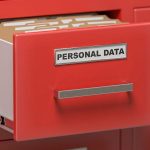Deep learning is growing in both popularity and revenue. In this article, we will shed light on the different milestones that have led to the deep learning field we know today. Some of these events include the introduction of the initial neural network model in 1943 and the first use of this technology, in 1970. We will then address more recent achievements, starting with … [Read more...] about Deep Learning: Past and Future
Big Data
Learn everything you need to know about big data. Find out how companies are using this revolutionary technology and what it means for your business strategy.
Setting up an Analytics Team for Success = Get Fuzzy!
Building on our month focussed on controversial topics, let's turn to what will set your team up for success. Different contexts can require different types of the analytics team. A lot of the advice that I offer within the Opinion section of this blog is based on a lifetime leading teams in large corporates. So, I'm pleased to partner with guest bloggers from other … [Read more...] about Setting up an Analytics Team for Success = Get Fuzzy!
9 Reasons Smart Data Scientists Don’t Touch Personal Data
The production of massive amounts of data as a result of the ongoing Big Data' revolution has transformed data analysis. The availability of analysis tools and decreasing storage costs, allied with a drive-by business to leverage these datasets with purchased and publicly available data can bring insight and monetize this new resource. This has led to an unprecedented amount of … [Read more...] about 9 Reasons Smart Data Scientists Don’t Touch Personal Data
Food, Health, and Data Science
When I was first approached by our CTO with an idea to write an article about food as medicine, for the share of a second my reaction was Are you stark raving mad? However, what I can be confident in is that he would never abandon the scientific approach to seemingly everything. So is there a scientific approach to eat health? Or, rather, what does Data Science say about … [Read more...] about Food, Health, and Data Science
Digital Asset Management (DAM): A Gentle Introduction and 7 Best Practices
As companies undergo a digital transformation, they become increasingly reliant on digital assets. These assets include files like documents, images, and video, as well as online content like marketing materials and emails. As companies grow, so does the data. It can be a challenge to manage so much data, while files can easily get lost in the heap. Digital asset management … [Read more...] about Digital Asset Management (DAM): A Gentle Introduction and 7 Best Practices
What is big data?
Big data is a term that refers to the massive amount of digital data created and shared every day. Big data can transform how we live, work, and communicate. It can be used to improve everything from public health and urban planning to business and marketing.
Big data is also changing the way we think about privacy and security. The volume, velocity, and variety of big data present challenges and opportunities for organizations and individuals. Regardless, big data is here to stay, and its impact will only continue to grow in the years to come.
What is big data analytics?
Big data analytics is the process of turning large, complex data sets into actionable insights. Businesses use various analytical tools and techniques, including machine learning and statistical analysis, to do this.
Big data analytics can be used to improve decision-making in areas like marketing, operations, and customer service. It can also be used to identify new business opportunities and optimize existing processes. With the help of big data analysis, businesses can gain a competitive edge by using their data better.
Want to learn more about big data? Datafloq has courses available. Contact us to get started.
When was big data introduced?
The term big data was coined in the 1990s, with some giving credit to John Mashey for popularizing the term. However, the concept of big data has been around for much longer.
Where does big data come from?
In the early days of computing, scientists and businesses began to realize that the amount of data being generated was increasing exponentially. As a result, they began to develop new methods for storing and processing data.
Over time, these methods have become increasingly sophisticated and have played a key role in enabling businesses to make sense of vast amounts of information. Today, big data is used in various industries, from retail to healthcare, and its importance is only likely to grow in the years to come.
What are examples of big data?
One of the most common examples of big data is social media data. With over 2 billion active users, Facebook generates a huge amount of data every day. This includes information on user interactions, posts, and even location data. Analyzing this data can help companies better understand their customers and target their marketing efforts.
Another example of big data is GPS signals. These signals are constantly being generated by devices like cell phones and fitness trackers. When combined with other data sets, GPS signals can be used to provide insights into everything from traffic patterns to human behavior. Finally, weather patterns are another type of big data set. By tracking these patterns over time, scientists can better understand the impact of climate change and develop strategies for mitigating its effects.
How do companies use big data?
Companies use big data in marketing, product development, and customer service. By analyzing large data sets, businesses can identify patterns and trends that would be otherwise difficult to spot. For example, a company might use big data to track customer behavior patterns to improve its marketing efforts.
Alternatively, a company might use big data to improve its products by identifying areas where customers are most likely to experience problems. For instance, big data can be used to improve customer service by finding pain points in the customer journey. Ultimately, big data provides companies with a valuable tool for gaining insights into their business operations.






